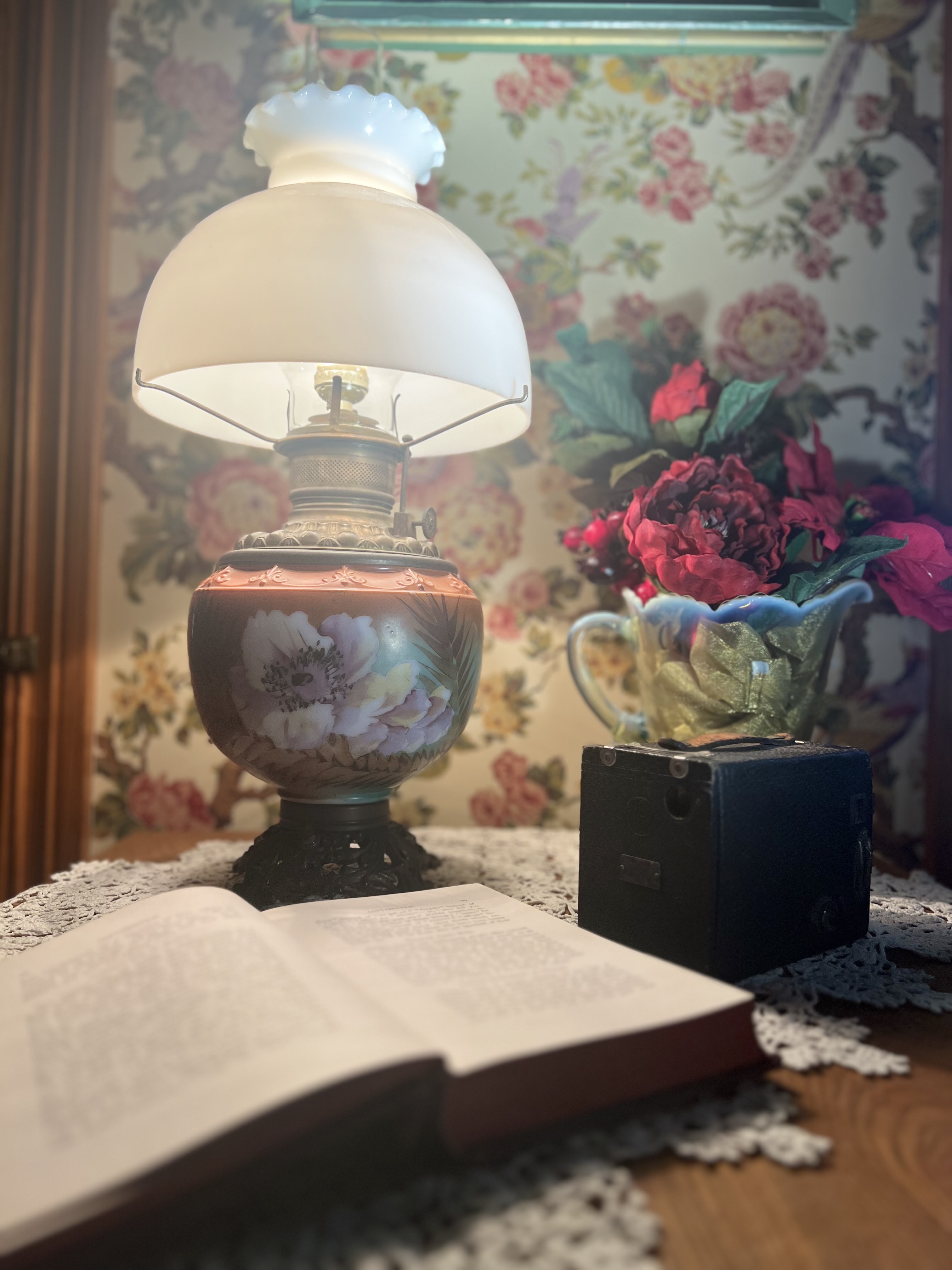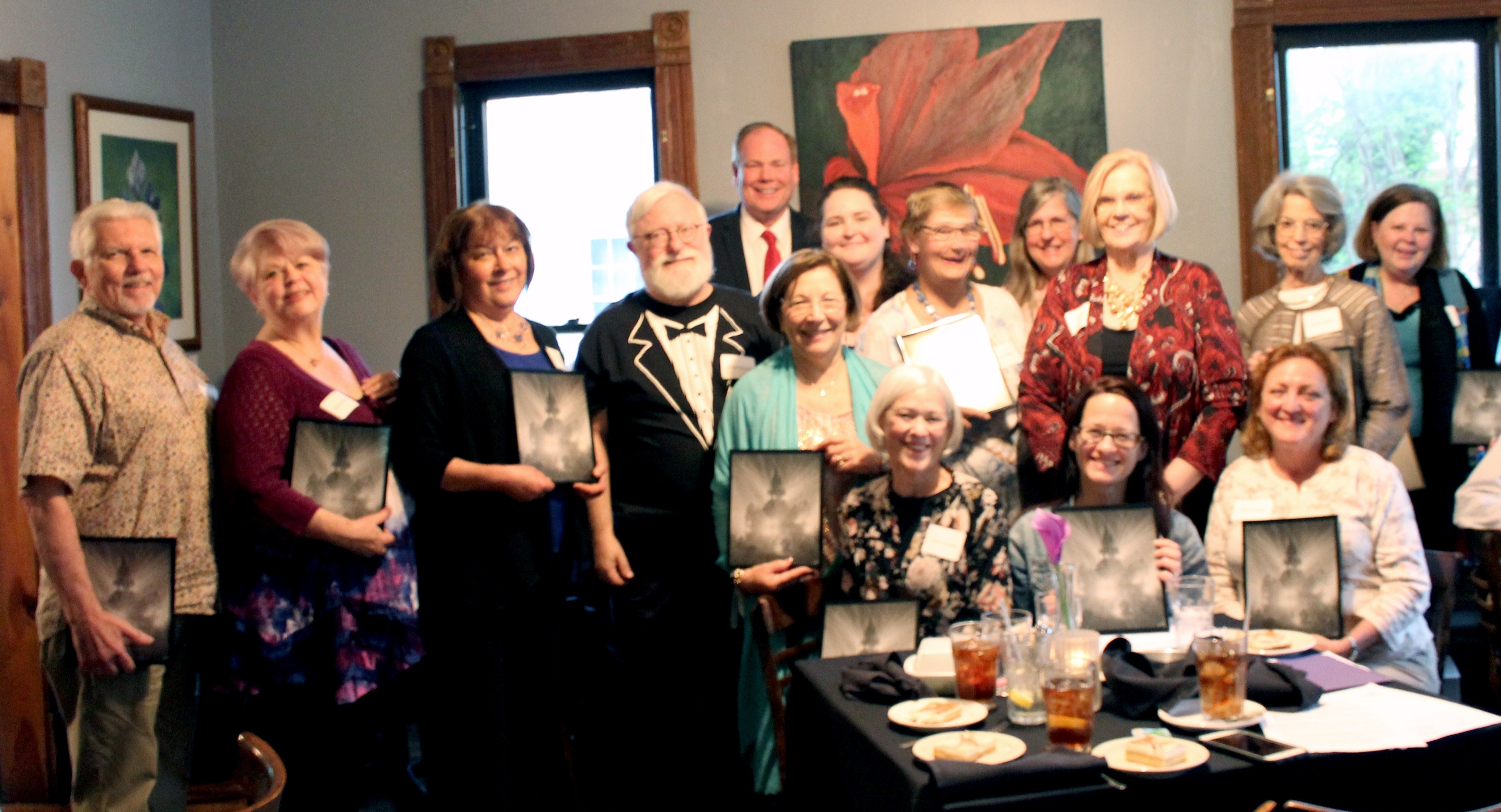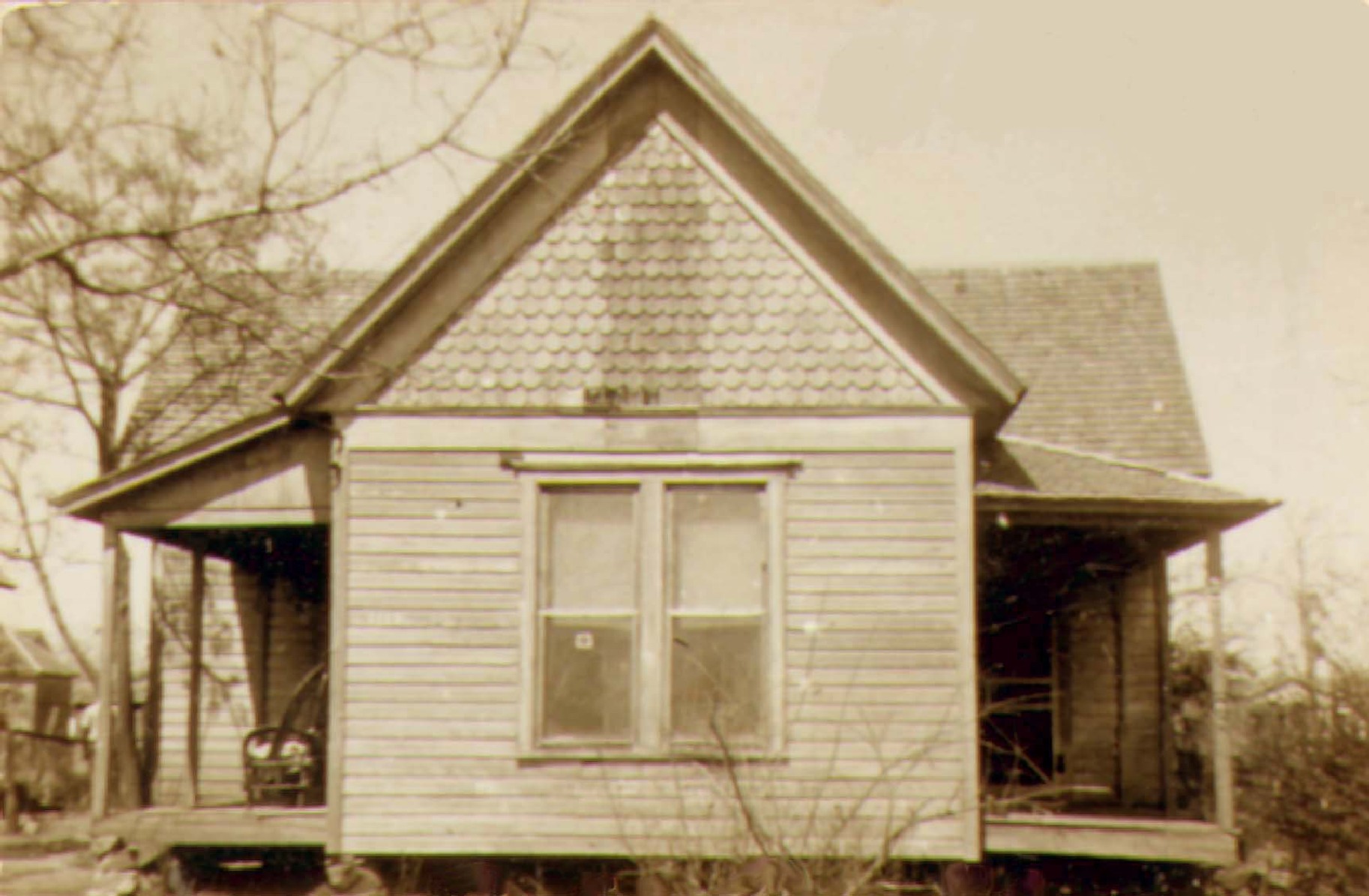
For many years, the community of Quakertown was excluded from local history. The only trace of evidence that could be found of the community’s displacement was in a book from 1978 titled History of Denton, Texas: From Its Beginning to 1960. The three sentences that touched base on this event simply said, “One of the first necessary steps was that of buying the several pieces of property from the owners. The project required several months, but the most of the former residents of the area soon had new and better homes about a half mile east of the railroad depot. This newly settled area was called Solomon Hill.” Unfortunately, this was a sugar coated, not-entirely-accurate telling of true events. Though the community’s history may have been neglected by the city, it remained with former residents and their descendants.
It wasn’t until the 1980s that local historians “rediscovered” the story of Quakertown. A Texas Woman’s University student began finding more information about the lost community and made it the topic of her thesis. The Quakertown Story went on to become a published booklet. Additionally, the revival of Quakertown’s history led local historians to connect with former residents and their family members. They collected oral histories, painting a clearer picture of what the community once was and how it came to an end. Denton began to acknowledge its decisions from the past.
The story of Quakertown begins in 1875 when 27 families from the White Rock area of Dallas moved two miles south of the Denton Square to a new settlement they called Freedman Town. Harvesting logs from the surrounding woods, they built their own log cabins and created the first community that truly belonged to them.
The growth of Freedman Town and the opening of Fred Douglass School, Denton’s first public school for African-Americans, led the community to relocate along Pecan Creek. Moving there was cheap as it was a flood zone, but the land was good and water was abundant. Rather than log cabins, most lived in well-built, wood-paneled houses and enjoyed a higher standard of living than before. The new community dubbed itself Quakertown, after the Quakers of the northeast who helped escaped slaves along the Underground Railroad. By 1900, Quakertown was tight-knit and thriving.
The community functioned as a town within a town. Though the white citizens of Denton had all of their necessary commodities, it goes without saying that black townspeople were not given the same resources. To fix this, Quakertown residents opened a multitude of businesses within their community, allowing it to function as a self-supporting town. Within its borders one could find a doctors office, cafe, grocery store, funeral home, confectionary, school, churches, lodges, restaurants and more.
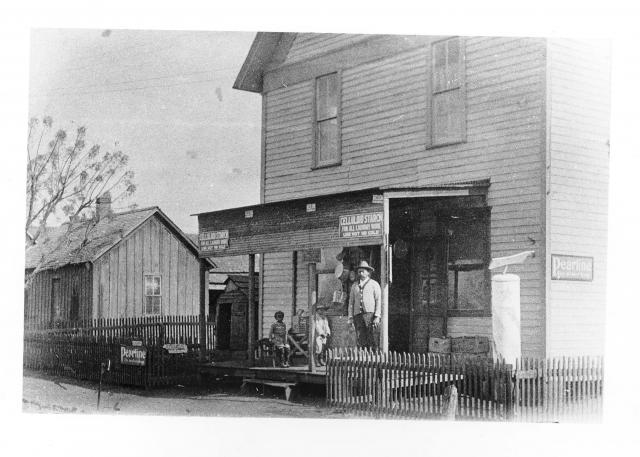
Ford Crawford’s General Store
The business owners of Quakertown were lucky enough to work within the community’s borders. Ford Crawford, an original Freedman Town settler, owned a general store that also served as a community center where people bought and traded goods. People in his shop were often seen playing checkers or swapping news. Upstairs was a meeting room for the Black Odd Fellows. His shop was located in the current parking lot of the Emily Fowler Library.
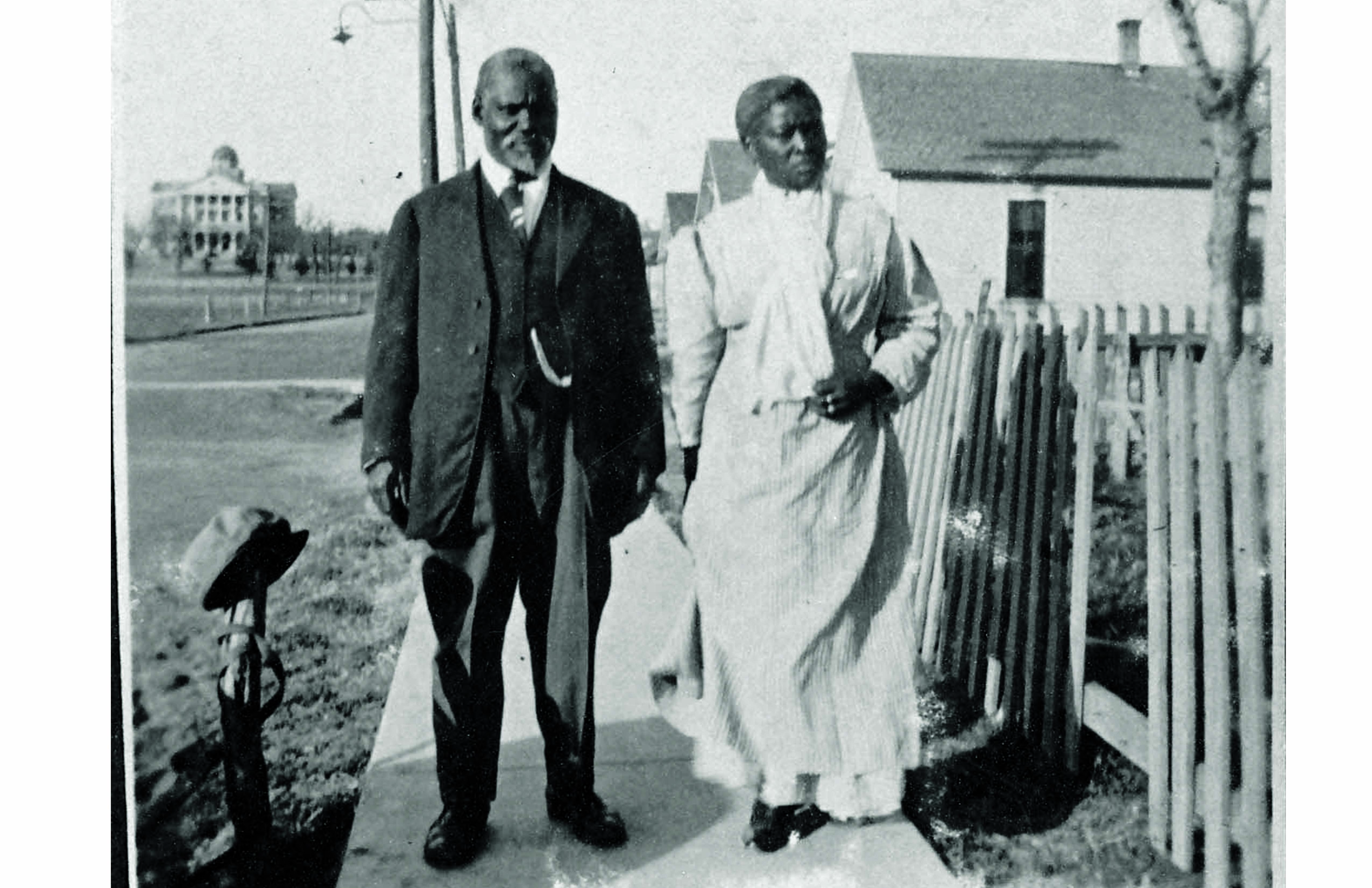
Joe and Alice Skinner, local business owners
Others were also able to monetarily sustain themselves within the borders of Quakertown. Joe and Alice Skinner were a couple who operated their own businesses. Joe owned a shoe shop and Alice ran a day care out of their home. On the side, Joe would also repair toys for the many children of Quakertown. Dr. Edwin Moten, Denton’s only black doctor at the time, operated his practice out of his home as well. Ford Crawford’s son was the community’s mortician. Plenty of others would take in laundry as a way to work from home.

Jack Cook working as a stable hand at CIA
Those who didn’t own their own businesses or work within Quakertown often found jobs with the white families or universities in Denton. Many worked as cooks, bakers, and gardeners for the residents along Hickory and Oak Streets. Additionally, North Texas State Normal College (NTSNC) and the College of Industrial Arts (CIA) would hire them as stable workers or janitors, including Jack Cook, who worked at CIA as a stable hand. Angeline Burr was a nurse who delivered both black and white babies throughout Denton, and Henry Taylor, known for his beautiful garden and rare white lilac bush, did landscaping for local white families. Whether they worked in or outside of Quakertown’s borders, residents contributed greatly and offered many talents to the Denton community.
Some of the most significant buildings in the neighborhood included the Frederick Douglass School and St. James African Methodist Episcopal Church. Many Quakertown residents moved to the area after the school was built, as they wanted their children to receive an education. It was the first African-American school in Denton. When it opened, 25 students were enrolled, a number that grew over time. The school burned down in 1913. In the period of rebuilding, children were still taught in the second story of the Crawford Store and inside of St. James AME. The school was rebuilt outside of Quakertown and eventually renamed Fred Moore school, after the long-time principal.

St. James AME in Quakertown
St. James African Methodist Episcopal Church (AME) was founded in the days of Freedman Town and was one of Quakertown’s first installments. It served as a gathering place for the community where holidays were spent and celebrations were hosted. The playground outside was a popular spot for children and women often held fundraisers on the lawn by selling fried fish dinners, ice cream, and pies. Every Sunday was marked by ringing church bells.
Ultimately, Quakertown provided a comfortable life for its residents. Researcher Letitia DeBurgos wrote that “most of the residents owned their own homes. Everyone had a vegetable garden. Chickens, cows, goats and pigs lived here too. Hunger was not known. Water came from wells and plumbing was an outhouse and a No. 2 washtub, while light was furnished by a kerosene lamp. The streets were dirt and playground for the children. The churches were a strong influence on the citizens and there was very little crime.”
Trouble began around 1920, when the president of the College of Industrial Arts, F.M. Bralley, began advocating the removal of Quakertown. The university and the black community were only a short distance apart and Bralley believed that the university could receive accreditation by getting rid of the neighborhood. He claimed that Denton “could rid the college of the menace of the negro quarters in close proximity to the college and thereby remove the danger that is always present so long as the situation remains as it is, and that could be done in a business way without friction.” In November of 1920, Bralley presented his idea to replace Quakertown with a city park to the Denton Rotary Club.
The residents of Quakertown began receiving word of their potential uprooting. Many worked for white families in Denton and would hear rumors regarding their displacement. Unfortunately, most could not argue against what they were hearing, as good relations with the white community were necessary to make a living. Before long, it was announced that a bond election would be held, allowing the city to vote on the removal of the community in order to build a new park. The news was brought to Quakertown residents in December of 1920 during a meeting on the second floor of Crawford’s shop.
Over the next months, the Chamber of Commerce began petitioning for the new park and the residents of Quakertown responded with a variety of emotion. Many worried that not abiding with the city would cause bad relations with white employers and thought it would be best to stay quiet. Opinions were divided by those who thought it was necessary to stand up for the community and those who found it logical to follow the path of least resistance.
In March of 1921, the petition was presented to the City Commission advocating a bond election that would determine Quakertown’s fate. A vote would be held on whether or not all of the Quakertown land would be purchased in order to create a new park. Women had just received the right to vote and the Denton Women’s Club was promised a brand new residence on the land if the bond passed – this secured many of their votes. However, there were still many barriers that kept blacks from voting, such as poll taxes and literacy tests. The residents of Quakertown could not participate in the election, leaving them without any say in their own futures.
The day before the bond election, the Denton Record-Chronicle campaigned for the park vote. Their article “Vote For the Good Order” explained how it would help the community. The decision was soon made. Those in favor of the park won by a narrow margin of 127 votes. By May of the next year, the City of Denton left Quakertown residents with an ultimatum: have your property bought by the city and find a new home, or move your current home to land that has been allocated for you in Southeast Denton on Solomon Hill.
Many of the residents who were frustrated with their treatment abandoned Denton altogether. Moten, the doctor, and his family relocated to Indiana. Angeline Burr followed her family to California – her departing was the only one mentioned in the Denton Record-Chronicle. A few residents put together a “Back to Liberia” fund where they planned to pool the proceeds from selling their land in order to establish a new colony in Africa. Unfortunately, the City of Denton did not pay a high dollar for the land they were purchasing. One man, Will Hill, publicly sued the city for under-compensation. He eventually dropped it, as those who resisted the move were threatened and the KKK had started encroaching on the community.
Unfortunately, those looking for property in Denton also faced hardship. Many neighborhoods posted signs warning them not to buy land in the vicinity. They were eventually offered land in Southeast Denton that they could move their homes to. The land was undeveloped and the amenities and comforts that Quakertown offered were lost. Comparing the living standards, moving to Solomon Hill was like traveling back in time. They were left without electricity, water, roads and many homes were damaged during the moves. One of the first houses that was moved to Solomon Hill was mysteriously burned down.
By 1923, all of the Quakertown residents had relocated. CIA received it’s sought-after accreditation. The City began construction on the new park.
Civic Center park was eventually renamed Quakertown Park and the city began seeking ways to pay respect to the events of the past.
Today, Denton honors the people of Quakertown. You can visit the park and see the historical markers remembering the community; go to the Civic Center and look at the murals that were made in honor of the former residents; visit the Quakertown House at the Denton County Historical Park; or read White Lilacs, a historical fiction novel written by Carolyn Meyer based on the Quakertown story.
Another Quakertown house, currently located in Southeast Denton, will also be moved to the Historical Park by the end of the year. The home of William Evenlyn and Alberta Woods will soon serve as another historical remembrance of the community.
